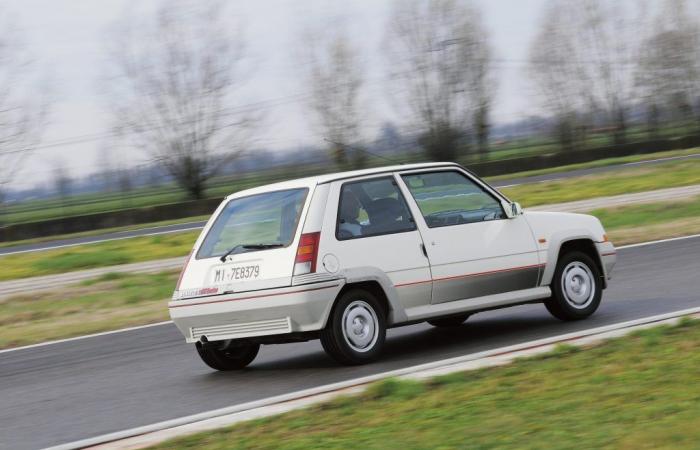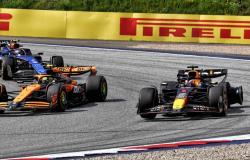Transverse engine. If the differences seem minimal, under the new bodywork there are important changes that mainly concern the chassis and the front axle, now of the MacPherson type with coil springs; furthermore, the engine is arranged transversely, rather than longitudinally, as on the previous model. An engine which, on the Supercinque GT Turbo is the same 1.4 used by the R5 Alpine Turbobut equipped with electronic ignition and brought to 115 HP, which will become 120 on the Phase 2 of 1987.
Arriva a 204 km/hThe turbine is a Garrett T2, oil-cooled for the very first examples and oil/water cooled from July 1986, which blows at 0.7 bar and contributes to the exuberant performancefavored by the reduced mass of just 830 kg. The GT Turbo in fact reaches 200 km/h with eight seconds to go from 0 to 100 km/h, while the Phase 2 reaches 204 and 7.8 seconds respectively, numbers that are still respected todayespecially on a car that measures only three metres and 60 centimetres in length and which, at the time, could afford to humiliate – especially in the legendary “traffic light-to-traffic light” – numerous high-class sports cars.
You have to give her a formal address. The GT Turbo’s setup is stiffened and lowered, while the braking system includes four disc brakes – with self-ventilating fronts -, combined with 13″ star-shaped alloy wheels, on 175/60 13 or, optionally, 195/55 13 tyres, sizes which are very difficult to find today. The fame of challenging car driven to the limit derives from the well-known tendency, already present on the Alpine Turbo, and even taken to the extreme on the mid-engined R5 Turbo, to lighten the rear end during the release phase, a fact that made the transition from understeer to oversteer a matter for experts. Even the brakes, aided by the small diameter rims, struggled to contain the reduced mass of the GT Turbo, so much so that in 1987 the braking system was updatedwith all four discs increasing from 228 to 238 mm in diameter.
Blatantly aggressive. The aesthetic characterization of the GT Turbo could only follow in the footsteps of its ancestors, with a front bumper that integrates the fog lights, side skirts connected to the widened wheel arches and that tail with a kind of ante litteram extractor, from which the exhaust terminal emerges. There is no shortage of “GT Turbo” logos on the sides and at the rear, while inside the orange instruments on a black background and the three-spoke steering wheel with a blatantly 80s racing design.
It’s hard to find an original one. The fabric sports seats have very square sidesthe plastic moldings are decorated with a red stripe, while the available body colors are three tones of blue, gray and white, two of red and a single black. Production ends in 1991leaving a void not fully filled by the sporty versions of the Clio. This is why, today, healthy and undamaged GT Turbos are rare and obviously expensive.






